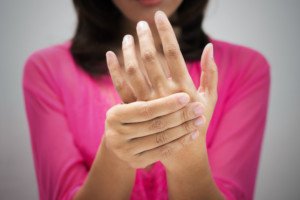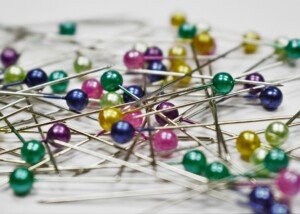
If you’re diabetic and you run for exercise, you may have noticed that during or soon after running your hands feel like pins and needles are going through them.
And in fact, people who are not diabetic, as well, from time to time will feel a “pins and needles” sensation in their hands during or soon after their running.
When one has diabetes and has a new-onset, unexplainable symptom that doesn’t seem related to their condition, it’s tempting to ascribe it to their condition anyways.
And a prickly tingly feeling in the hands and/or fingers after or during exercise is one of those oddball symptoms.
CAN Diabetes Cause One’s Hands to Feel Like Pins and Needles from Running?
“Not that I know of,” says Sheri Colberg, PhD, Professor Emerita, Exercise Science, Old Dominion University, founder of Diabetes Motion, and one of the world’s leading experts on diabetes and exercise.
“Usually ‘pins and needles’ come from pinching a nerve for an extended period of time (such as by crossing your legs when sitting) or from cutting off or restricting blood flow to an area of your body (like with a blood pressure cuff).
“As described, it wouldn’t have anything to do with diabetes.”
Difference Between Type 1 and Type 2 Diabetes
In type 1, the pancreas does not produce insulin. This hormone’s job is to shuttle blood sugar (glucose) to the cells (mainly muscle) to be used for energy.
If this hormone isn’t being produced by the pancreas, then sugar will build up in the blood.
About 10 percent of diabetics have the type 1 version, and management includes daily injections of insulin.
In the type 2 version, the pancreas does produce insulin, and this hormone brings glucose to the cells. And here’s where the problem begins.
The cells’ receptor sites for the insulin do not work efficiently, and there may also be a shortage of the receptor sites.
The result is sugar buildup in the blood due to unused glucose.
Whether a person has type 1 or type 2 diabetes, exercise is crucial for management. Running, of course, is a great form of cardiovascular exercise.
If you feel pins and needles during or after your aerobics, see your physician to uncover the cause.
 The mission of Diabetes Motion is to provide practical guidance about blood glucose management to active diabetics. Dr. Sheri Colberg is the author of “Diabetes & Keeping Fit for Dummies.”
The mission of Diabetes Motion is to provide practical guidance about blood glucose management to active diabetics. Dr. Sheri Colberg is the author of “Diabetes & Keeping Fit for Dummies.”
 Lorra Garrick has been covering medical, fitness and cybersecurity topics for many years, having written thousands of articles for print magazines and websites, including as a ghostwriter. She’s also a former ACE-certified personal trainer.
Lorra Garrick has been covering medical, fitness and cybersecurity topics for many years, having written thousands of articles for print magazines and websites, including as a ghostwriter. She’s also a former ACE-certified personal trainer.
.








































